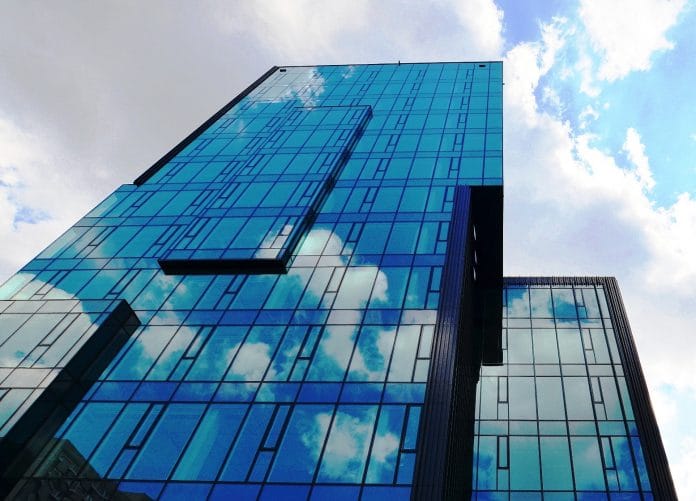Walter Herz consultants point out the main trends in the development of Polish office market
- Record-breaking demand and new supply
Record breaking has become the domain of office real estate in our country. This market trend, which has been going on for several quarters, is proving its current nature. The first half of the year saw a record volume – over 720 thousand sq m of leased space in the largest cities in Poland, which means an improvement of 15 per cent, comparing to the last year. The best result in history was recorded primarily on the regional markets (outside Warsaw), where over 330 thousand sq m of offices were leased, a quarter more than a year ago.
Situation is similar, when it comes to supply. Around 1.8 million square meters of offices remain under construction in the largest agglomerations in the country, 800 thousand sq m of which is in Warsaw and 1 million sq m on the regional markets. In this case, last year’s result was improved by almost one third.
- Sustainable development investments
New office complexes are now often designed to integrate seamlessly with the surrounding area and to improve urban infrastructure. Developers are not only focusing on the buildings themselves anymore, but they also manage the space around them in such a way that they are as attractive to office employees and local residents as possible. They are increasingly involved in the idea of urbanization, creating new urban fabric.
Nearby the office buildings, developers arrange public space, including leisure zones, pedestrian areas, green courtyards and squares, as well as walkways with restaurants, cafés, shops and services. What is more, there are fountains, surrounded by space for relaxation and outdoor cafés close to the office buildings. In some locations, investors create space for urban courtyards, where in the summer one can take part in team games, work out outdoor or watch a movie in an outdoor cinema.
In many office projects, there is a strong emphasis on sport and recreation. In addition to the comprehensive amenities for cyclists, which are becoming popular, there are also basketball, badminton and beach volleyball courts, as well as boules tracks and walls for climbing.
Real estate developers are following the changing preferences on how to spend free time, and they take the initiative to create the most attractive working conditions in the common areas of the buildings and their surroundings. They also want to make office buildings alive outside work hours.
- Multi-functionality of projects
Mixed-use facilities are becoming increasingly important. In many complexes, apart from offices, there are also commercial, retail, leisure, hotel and residential areas. Diversification of functions reduces the risk of investing, and office workers have access to shops, services and places where they can rest and relax.
Multi-functionality of the facilities is also enriched in many cases by conference and event zones, catering, as well as in the already common in the office buildings fitness centers, medical and spa facilities and other services. It is due to the fact that the facilities that perfectly meet the demand for all kinds of services are currently the most successful on the market.
- Eco phase
New investments from the office segment are currently being implemented in line with eco-friendly and energy-efficient building standards. They are environmentally friendly, which is confirmed by their certificates.
Ecological construction also benefits the tenants who pay less for utilities, due to systems to save and reuse water and energy, mostly from renewable sources. Green buildings provide very good work environment, which is very important for the well-being of the people who spend a lot of time in the office buildings.
- Construction of office towers
Only recently, spectacular office towers have started growing in Poland. Last year, a 155 meter Q22 office building and a 220 meter tower at the Warsaw Spire complex were completed in Warsaw. At the end of last year, the construction of the Varso project has begun nearby the Central Railway Station. It will be the tallest building in Poland, with the spire reaching up to 310 meters.
In addition, Skyliner skyscraper, which is to be 195 meters high, is under construction nearby Daszyńskiego roundabout. In the same area, there will also emerge a 130-meter office building within Mennica Legacy Towers. Two similar height towers will also be built in Warsaw HUB investment and another one in the Spark project in the same area. Moreover, the Spinnaker Tower at Pańska Street is being prepared for construction.
However, spectacular projects are not only emerging in Warsaw. Gdańsk has a 180 meter Olivia Star, and Gdynia has a 142 meter high Sea Towers. In Katowice, the .KTW project will have a 133 meter tower, which will be the tallest building in the city. Whereas in Cracow, a the unmatched 102 meter building is already under construction in the Unity Centre.
- Office investments by the railway stations
Large-scale office investments are also becoming more and more frequently located by the largest railway stations, for example Gdański Business Center by Gdański Railway Station and West Station by Zachodni Railway Station, as well as the already mentioned Varso project by Central Railway Station. The construction of Dworzec Warszawa Gdańska project is also being planned. The project will include a modern building of the station and a large office and retail complex, as well as public space.
There will be more commercial facilities located in the immediate vicinity of the stations, because these are ideal locations for commuters, as well as investors. Other such projects are already being planned in different cities. Office Hub will grow, among others, in Łódź near the new Łódź Fabryczna Railway Station. Whereas in Cracow 21 thousand sq m of new space is to be commissione in the office and retail complex of Central Railway Station Office Park located by Kraków Główny Railway Station.
- Revitalization of historic post-industrial buildings
The leading agglomerations in Poland see a lot of investments based on the modernization of historical industrial buildings. These types of projects, which indicate maturing of the market, are an exclusive supplement to the offer. Not only the unique potential of the historic buildings, but also their excellent, usually central location encourages the investors to revitalize former factories, industrial complexes, power plants and breweries.
The retro-modern projects implemented in Warsaw include Centrum Praskie Koneser, Elektrownia Powiśle, and Europejski hotel, as well as the newly built Hala Koszyki. The construction of Norblin factory by Żelazna Steet, which will turn into an Art N complex is currently starting. The Pollena factory at Szwedzka Street is also waiting for its construction. Whereas, Nowe Centrum Łodzi is a unique center of this kind in Europe. In Gdańsk, the example of an investment based on the regeneration of historical urban tissue is Wyspa Spichrzów Island.
- Coworking space
A new group of tenants is emerging on our office market. They are coworking space operators, who have already marked their presence in creating demand for office space in the largest agglomerations, and they will be systematically increasing it in the near future.
The coworking space, which is supporting entrepreneurship and start-ups development, is emerging in the most modern and largest office buildings, which are being built all over Poland. Market operators such as Business Link, the Brain Embassy, The Heart, Mindspace and TechHub are cooperating with the biggest real estate developers in the country.
- Modern business services sector boosts demand on the regional markets
The increasing activity of companies from modern business services sector lies at the origins of development of Polish office market, especially in the regional cities. No other segment of the market is growing in our country as fast this one, at the rate of 15-20 per cent annually.
In the first half of 2017, companies from the industry, which are constantly developing their structures in Poland, leased over 200 thousand sq m of modern office space on the largest office markets in the county, outside Warsaw. The sector accounts for 60 per cent of total demand for offices in regional agglomerations.
Sector companies increase their demand for office space year by year. The largest BPO center in Poland is Cracow, where modern business services companies leased 66 thousand sq m of office space out of total of 98 thousand sq m of offices that found tenants in the first half of the year in the capital of Małopolska.
According to Walter Herz consultants, Łódź is particularly remarkable, where the BPO/SSC share in the demand for office space is record high. In the first six months of the year, the sector generated almost 80 per cent of demand for offices on the Lodz market.
- Pre-lease agreements in the regions and prolonging contracts
The dominant form of contracts in the regional cities, outside of Warsaw, where there is a shortage of vacancies, are the pre-lease agreements that involve leasing space before or during the construction of the investment. A few dozen years ago they were signed very rarely in Poland and in the first half of this year, the seven largest cities outside Warsaw covered almost one third of the contracts. In the regions, businesses looking for large offices often do not find adequate space in the existing facilities, so there is no alternative for pre-lease.
Such a situation has been visible in Cracow for quite some time, and recently also in Łódź. On the Tri-City market, tenants are also waiting for another large investment. In the Tri-City, pre-lease transactions have been accounting for 30 to 45 per cent of transactions for two years now.
Specialists are also observing a trend of increasing lease terms, which proves stabilization on the market. Companies sign contracts for longer periods than before, in order to guarantee stable terms of agreements. Investors from the modern business services sectors are tenants that sign the largest lease contracts. They lease not only offices of a largest size, but also sign the longest lasting contracts, even for several years.


















